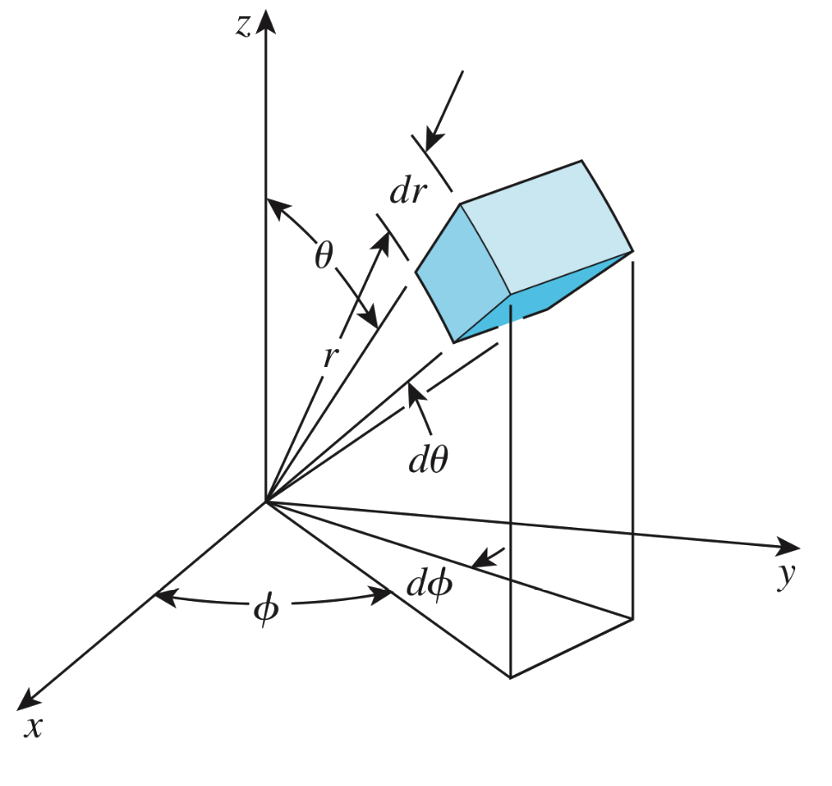MATH 22: Introduction to Calculus of Several Variables (Summer 2021)
- Welcome to the course webpage for the Summer 2021 (First Session) manifestation of MATH 22: Introduction to Calculus of Several Variables at the University
of California, Santa Cruz.
Course Info
- Title: MATH 22: Introduction to Calculus of Several Variables
- Quarter: Summer 2021 (First Session)
- Credits: 5
- Time: 1:00PM-3:30PM (M/W/F)
Instructor Info
- Jadyn V. Breland (he/him/his)
- Office hours: 1:00PM-2:00PM (T/Th)
- jadynbreland.com
| Course Syllabus | Reading Assignments | Daily Assignments & Notes | Weekly Assignments | Edfinity Exercises | Exam Info |
The official syllabus for the course is located here. Much of the important information from the syllabus is summarized below.
Basic Course Information
- Prerequisites: MATH 11B or MATH 19B or MATH 20B or AM 15B or AP calculus BC exam score of 4 or 5.
- Textbook: We will be using Active Calculus: Multivariable, by Steve Schlicker. In the spirit of reducing the cost of your education, I have chosen to use this free and open source textbook. You can download the textbook for free or view the .html version. This textbook is by no means traditional: as the title suggests, the student is expected to actively engage with the textbook. There are very few worked examples in the texts, with there instead being 3-4 activities per section that engage students in connecting ideas, solving problems, and developing understanding of key calculus concepts. Everyone will be expected to read the textbook and digest the material in a meaningful way, outside of class. Class meetings will typically be reserved for discussing key ideas and completing the activities, either individually or in groups.
-
Zoom Meetings:
We will have synchronous Zoom meetings every Monday, Wednesday, & Friday from
1:00PM − 3:30PM. The Zoom room information will be posted on Zulip. The first meeting is on
June 21st, 2021 and the last meeting is on July 21st, 2021. We will not have a meeting on July 23, instead
you will be able to use that time to work on the final exam. I will not be recording the meetings. However,
any notes from our meetings will be posted on my website. Zoom meetings will typically be reserved for
doing mathematics - usually by completing the activities from the assigned readings.
- General Zoom Guidelines:
- Please turn your video feed on. If you are uncomfortable turning on your video feed, please use a picture of yourself as your Zoom profile picture. Having your video feed on makes it easier for me and your classmates to interact with you, and it will help you to stay focused and learn.
- Keep your microphone muted unless you are speaking.
- Breakout Room Guidelines:
- Please keep your microphone and video on and participate actively with your group.
- If you have a tablet, or other device, capable of producing digital hand-written notes, please offer to be the scribe for your group!
- Course Webpage: You're on it! Assigned readings and other assignments will typically be posted here. If there are any notes from our meetings, they will be posted here as well.
-
Teaching Assistant:
Our TA is Xuguang Liu. You can contact him via Zulip or via email. Xuguang will hold weekly office hours and discussion sections. You are highly encouraged to attend these!
- TA e-mail:
- TA Office Hours: 4:00PM - 5:00PM (M/W)
- Discussion Sections: 4:00PM - 5:00PM (T/Th)
- Canvas: The Canvas webpage will be primarily used for hosting grades. Important links and due dates are also available there. I do not regularly check Canvas messages, please contact be on Zulip. Login here: https://canvas.ucsc.edu with your CruzID and Gold password.
-
Zulip:
We will be using Zulip as a discussion forum for the course. Our forum is located here:
https://math22.zulipchat.com/. You will receive an invitation to join via your .edu email. You can use the forum to ask questions to me, your TA, or the class. You can also connect with other students in the class via private messages. Zulip supports basic $\LaTeX$ commands, which means you can easily typeset mathematical equations. I will post an example on Zulip, but you can also take a look at the examples in the § Quick $\LaTeX$ Guide. - Edfinity: We will use the online homework management system edfinity. You are required to enroll in our course at the following link: https://math22.zulipchat.com/join/pmxp547aa2dtbanrwjxubjxp/. The cost is 25 dollars per student. Note: I chose edfinity as an alternative to WebAssign, which costs over 100 dollars per student.
- Accessibility: I am strongly committed to making my course as accessible as possible. If you encounter materials that are not accessible to you, or experience a barrier to your participation, please bring this to my attention and I will gladly work with you to ensure accessibility. I am also happy to honor any accommodations letters from the Disability Resource Center (DRC) that you would like to confidentially bring to my attention.
- Course Content: Functions of several variables. Continuity and partial derivatives. The chain rule, gradient and directional derivative. Maxima and minima, including Lagrange multipliers. The double and triple integral and change of variables. Surface area and volumes. Applications from biology, chemistry, earth sciences, engineering, and physics.
-
Learning Outcomes:
Upon successful completion of the course, students will be able to do the following
within the topic of multivariable calculus:
- Recall the basic definitions, theorems, and techniques of multivariable calculus.
- Distinguish truth from falsehood and create examples and counterexamples.
- Competently and confidently solve a variety of problems that require techniques from multivariable calculus.
- Communicate mathematical ideas and arguments in clear, convincing, and concise language, both written and oral.
Assessments
- Assessment Distribution: Your score is a nonnegative real number calculated as the weighted average of the following assessments.
-
Submitting Assignments: All reading assignments and weekly assignments must be submitted
via gradescope.
- When you submit your files, you will be prompted to select, for each specified problem or activity, the pages on which the associated work/solution are located. You are required to accurately identify the pages associated to each problem. If you fail to do so, you may receive a “No Pass” (if it is a daily assignment) or you may lose credit for each problem for which the pages are not correctly identified (if it is a weekly assignment).
-
Additionally, it is your responsibility to make sure your submission is legible and easy to read. If you
submit work that is difficult or impossible to read, you will not receive credit for it, and you will not be
allowed to resubmit.
- There are numerous free smart phone apps that allow you scan your work and save it as a .pdf.
- Extra Credit: The only way to earn extra credit is by earning more than 80 points (complete roughly 80 exercises) on Edfinity. You can earn at most 10 percentage points of extra credit. See here.
- Late Work Policy: I will not, under any circumstance, accept late submissions for reading assignments, daily assignments, or Edfinity exercises. Late submissions of weekly homeworks and exams are only accepted, at my sole discretion, in extreme circumstances, such as in the case of a medical emergency. Extreme circumstances must be brought to my attention as soon as possible and must be adequately documented.
-
Letter Grades:
Your final letter grade depends on your score. Final letter grades are assigned according
to the following score ranges:
A+ 96-100 B+ 86-89 C+ 76-79 D+ 66-69 F 0-59 A 93-95 B 83-85 C 73-75 D 63-65 A- 90-92 B- 80-82 C- 70-72 D- 60-62
Score ranges may be adjusted (to your advantage) according to class performance. Scores falling in be- tween two ranges will be rounded up. For example, according to the ranges above a final score of 75.1 will earn the letter grade C+ (rounded up), whereas a final score of 74.9 will earn the letter grade C (no rounding).


